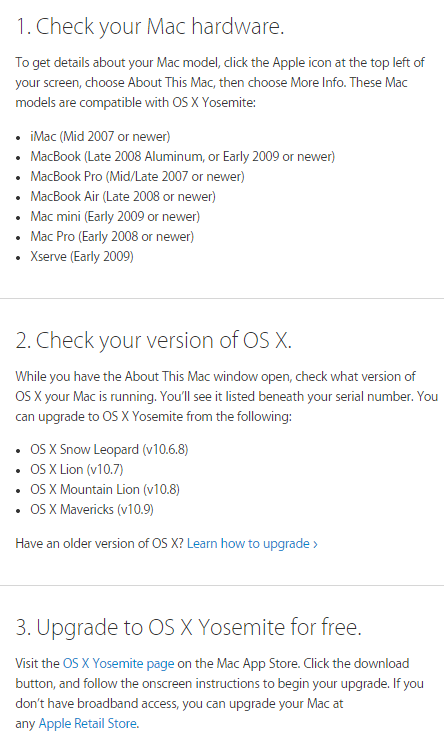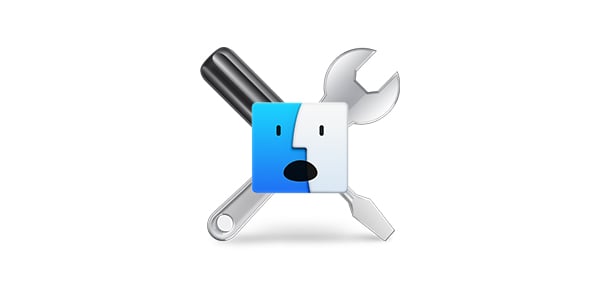
- Mountain lion mac with yosemite compatibility install#
- Mountain lion mac with yosemite compatibility drivers#
- Mountain lion mac with yosemite compatibility update#
- Mountain lion mac with yosemite compatibility download#
I should point out that I selected "Legacy USB Support" in UniBeast, as my MB is a Socket 1156. I used the appropriate DSDT when running MultiBeast, but I am not sure whether or not running MultiBeast against a drive that you are currently not booted into is a supported/recommended use of MB. I then booted into my backup 10.7.4 lion instance and ran MultiBeast 5.0.2 against the 10.8 instance, but this didn't seem to help either. I tried the NPCI=0x3000 boot flag, but this caused the boot to hang 2 lines earlier than before. However, when I try to boot into the ML updated drive using UniBeast, I am getting a hang at.
Mountain lion mac with yosemite compatibility update#
I tried to perform an update to my 10.7.4 machine, and have no problem installing ML using UniBeast 1.5.3. I'm running a GA-H55M-S2V with a i3 540, and MSI N8400GS-D512H graphics.
Mountain lion mac with yosemite compatibility drivers#
Open and run Multibeast's UserDSDT or DSDT-Free Installation and any further drivers to enable audio, network, graphics, etc. NOTE: Gigabyte UEFI motherboards don't require a DSDT.ġ1.
Mountain lion mac with yosemite compatibility download#
Visit the DSDT Database to download your motherboard's DSDT Visit /downloads to download the latest MultiBeastġ0. If you don't have a user account, create one!ĩ. You should have working Ethernet from UniBeast, or if you have a native Wi-Fi card.Ĩ.

When you arrive at the desktop, open Safariħ. At the Chimera Boot Screen, choose your new Mountain Lion installation.ĥ.
Mountain lion mac with yosemite compatibility install#
MultiBeast is an all-in-one post-installation tool designed to enable boot from hard drive, and install support for Audio, Network, and Graphics. STEP 4: Post-Installation Using MultiBeast When the installer asks you where to install, choose Mountain Lion, or your existing install. After you're fully installed, you can switch back to your 6xxx card.ħ. We recommend using an alternate graphics card or onboard Intel HD 3000/4000 graphics for the entire process. There is an issue with AMD 6xxx cards in Mountain Lion. Special Instructions for AMD 6xxx Graphics Cards: Sometimes a cure-all to reach the installer. Verbose Mode- allowing you to see the loading of the OS instead of the Apple Boot Screen. This can solve many issues, allowing you to access the installer screen. You can install without graphics card injection. Set it manually to 0 by typing this command at the boot screen above. UniBeast has PCIRootUID=1 set by default for the most universal support for recommended builds. This setting may be necessary on motherboards using Fermi and Kepler NVIDIA cards for installation. Reboot and try another port or one of the following flags.

The DVI or the HDMI port are usually the most compatible for installation. It's your graphics or possibly your choice of graphics port.

We've provided a few tips below.īlack Screen, White Screen, Flickering Screen You will have to troubleshoot this part yourself according to your own hardware specs. Here are a list of things you can try in order to troubleshoot booting to the installer. You can hit arrow-down as well on the boot screen to access boot options. You may have to type extra boot arguments in the system at the boot screen you see above. For maximum compatibility, we recommend using integrated graphics (HD 3000/4000) for the installation, then adding your discrete graphics card after a successful installation. Optional Boot Arguments & Troubleshooting Tipsįor some hardware, it may be more difficult to get to the installation screen. At the Chimera Boot Screen, choose USB and hit Enter Building a CustoMac Hackintosh: Buyer's GuideĤ.


 0 kommentar(er)
0 kommentar(er)
